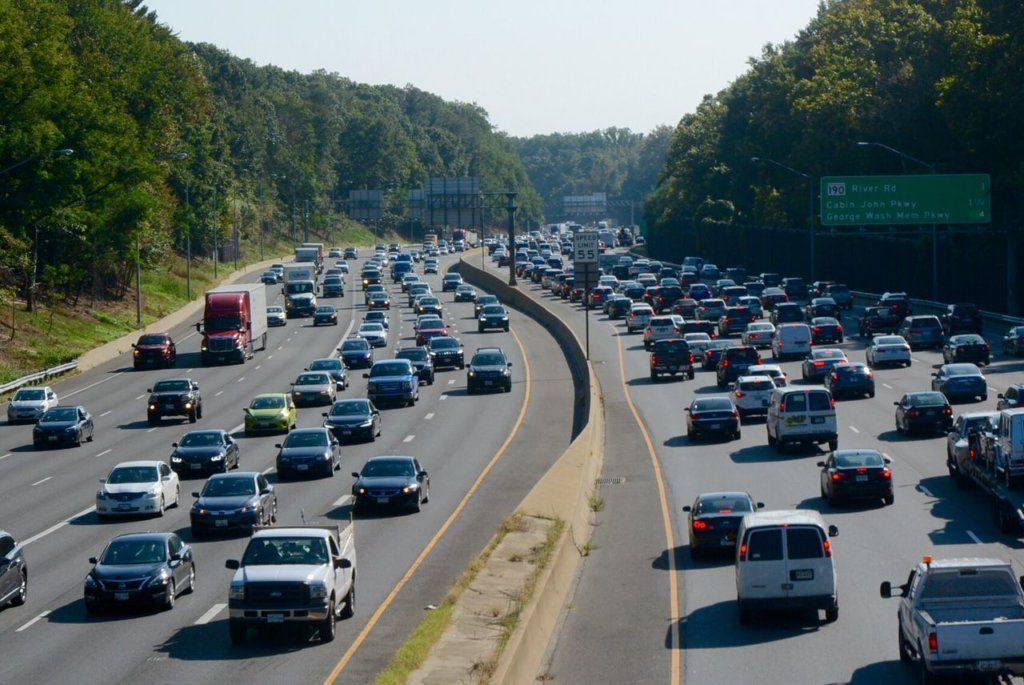
Maryland’s Board of Public Works could go back next week on toll lane promises made to appease Montgomery and Prince George’s counties earlier this year.
The changes would accelerate construction of toll lanes around part of the Capital Beltway; allow for some land to be purchased for the widening before final environmental approvals; alter promises about how a share of toll revenue would support transit options; and extend plans for Beltway toll lanes in Prince George’s County all the way to the Wilson Bridge.
While the state moves forward with the project, local officials in Montgomery and Prince George’s counties have expressed a number of concerns, and they continue to say they are lacking key information about the project and potential alternatives.
To address some of the complaints and get the additional vote needed to keep the plan moving forward, the Board of Public Works promised that Interstate 270 toll lanes would be built first, before any toll lanes around the Beltway.
Maryland Gov. Larry Hogan and Comptroller Peter Franchot voted in favor, while Treasurer Nancy Kopp voted against the June designation as she asked for more information.
Hogan and Transportation Secretary Pete Rahn previewed the proposed changes to that June promise earlier this month, when they highlighted the project’s planned reconstruction of the American Legion Bridge, but this is the first time details of the newly proposed changes have been made public.
The Legion Bridge widening to include two toll lanes each way that will connect to the 495 Express Lanes in Virginia would be the responsibility of the private company or group of companies that win the chance to design, build and operate toll lanes around the Maryland side of the Beltway to I-95.
Construction is expected to start at the Legion Bridge and work its way east.
Maryland plans to award a separate contract to a company or group of companies to build toll lanes at the same time up I-270 to Shady Grove. Those companies would then later be allowed to extend those toll lanes to Frederick.
Winning bidders for those contracts are now scheduled to be selected in less than a year — by November 2020. Final agreements would then be signed in early 2021, which could mean some parts of the toll lanes open in the mid-2020s.
A third contract, which could go to the same or different companies, would be awarded later on to extend the Beltway toll lanes from I-95 south toward the Wilson Bridge. That extension could be done in multiple phases, with the extension from Maryland Route 5 to the Wilson Bridge remaining the farthest off.
The Board of Public Works could still amend the Maryland Department of Transportation’s and Maryland Transportation Authority’s recommendations before final adoption of the new plans on Dec. 4.
The recommendations call for the state to be permitted to buy land needed for the road widening projects if the property owner asks the state to purchase the land now or if the land is put up for sale on the open market.
Transit funding would no longer be a guaranteed 10% of the state’s share of any toll revenue, but would instead be promised at a to-be-determined rate through the transportation secretary’s office.
The attorney general’s office had expressed concerns about the specific 10% promise violating budget appropriations rules. Another transit change would designate those state grants not only for Montgomery and Prince George’s services, but also for areas like Frederick County.
The state is promising free “mass transit bus access” to the toll lanes, but is not guaranteeing that carpoolers, other buses or motorcycles will ride free in the lanes.
It sets up the potential for different toll lane rules in Maryland and Virginia.







